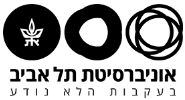School of Mechanical Engineering Balster Dyogo
School of Mechanical Engineering Semin
Monday, March 12, 2018 at 14:00
Wolfson Building of Mechanical Engineering, Room 206
Transport in Streams and Rivers (Tubes and canoes, rafts and kayaks, barges and paddle-wheels; so many ways to travel downstream.)
Diogo Bolster
Associate Professor and Frank M. Freimann Collegiate Chair in Hydrology
Department of Civil & Environmental Engineering & Earth Sciences
College of Engineering, University of Notre Dame
Rivers and streams transport the products of erosion and weathering, as well as anthropogenic materials collected from industrial, agricultural, and urban environments. While waterways are efficient transport networks, they are also important biogeochemical hotspots. Microbial biofilms colonizing organic and inorganic substrates at the sediment-water interface drive important biogeochemical reactions. The hyporheos is so efficient at cleaning up systems this that it is often referred to as a river’s liver, but the water flow there is orders of magnitude slower than in the main water channel while reaction rates are orders of magnitude greater. In brief, streams are complex heterogeneous systems characterized by a broad distribution of spatial and temporal transport scales influenced by water column and adjacent subsurface properties. This broad separation of scales leads to systems that are difficult to model mathematically, particularly over relevant scales of practical interest. Conventional modeling approaches simply fail and transport in streams and rivers is commonly observed to be “anomalous”. Here we present the results from a series of field experiments and high resolution numerical experiments of flow and conservative tracer transport that explore the characteristics of stream and hyporheic flow that control anomalous behaviors. We present a stochastic model with which we can model the observations and with which we can parse out individual mechanisms controlling large scale transport more clearly, enabling us to move towards building predictive mechanistic large scale models. We conclude with preliminary results and a discussion on what the implications for transport of more complex substances of interest might be, including nutrients and other biological matter, such as DNA.


